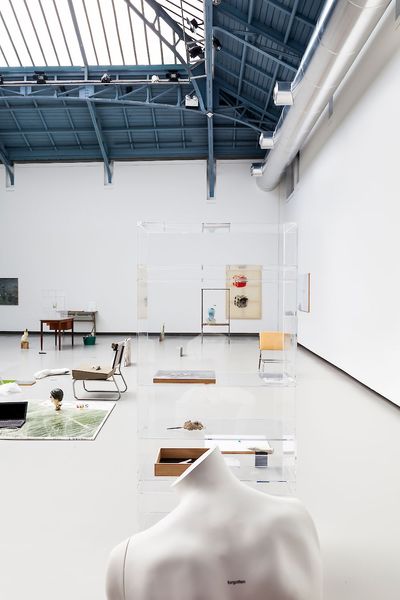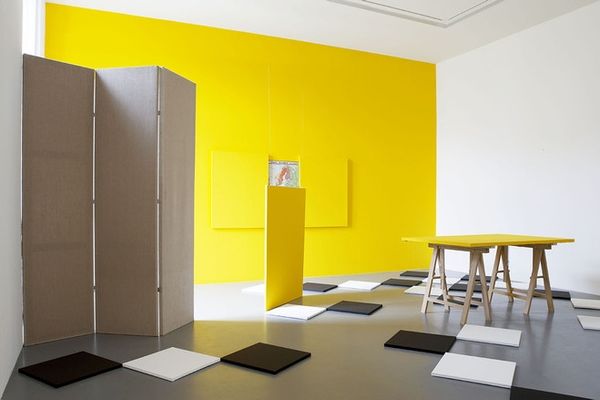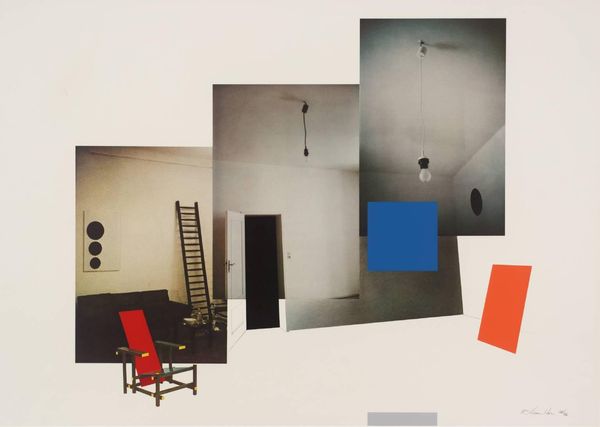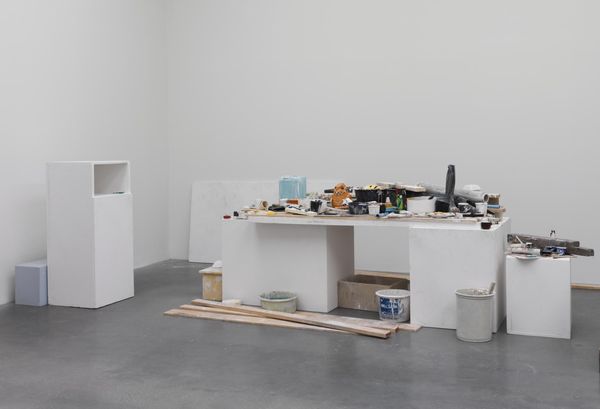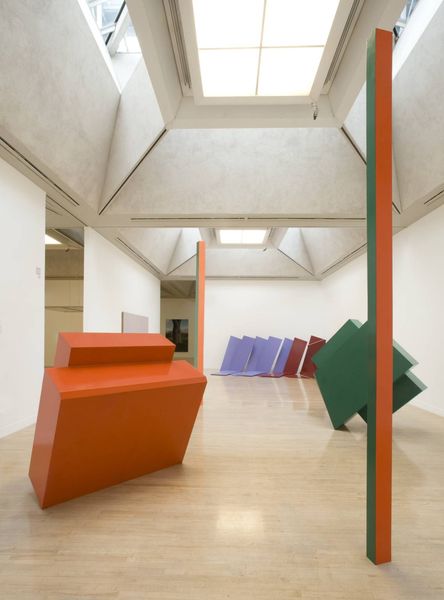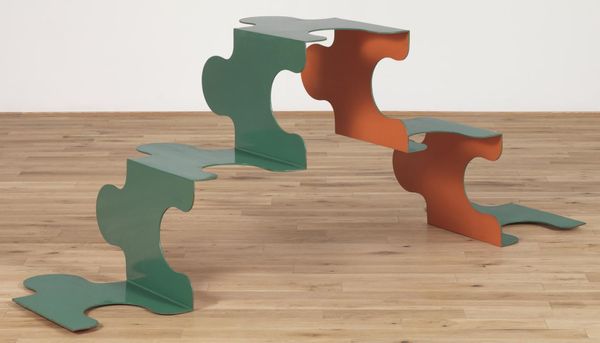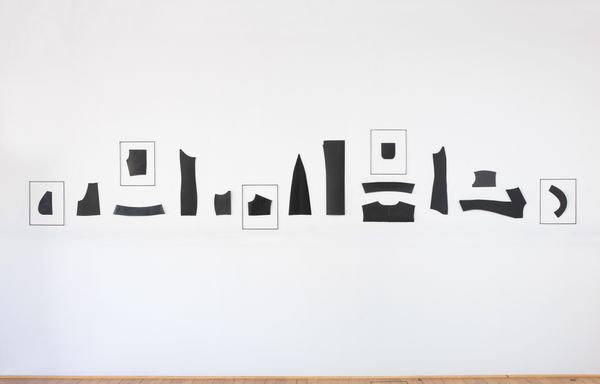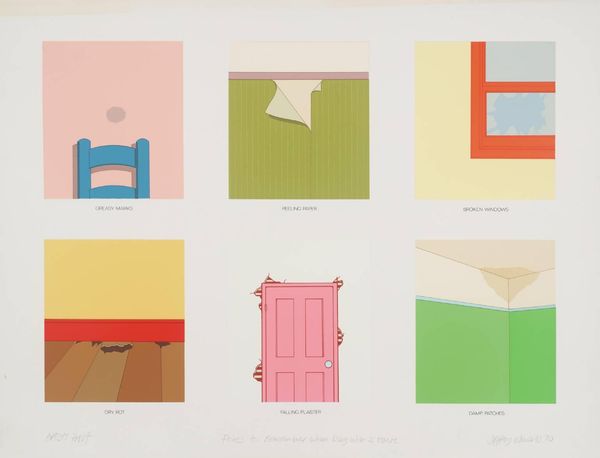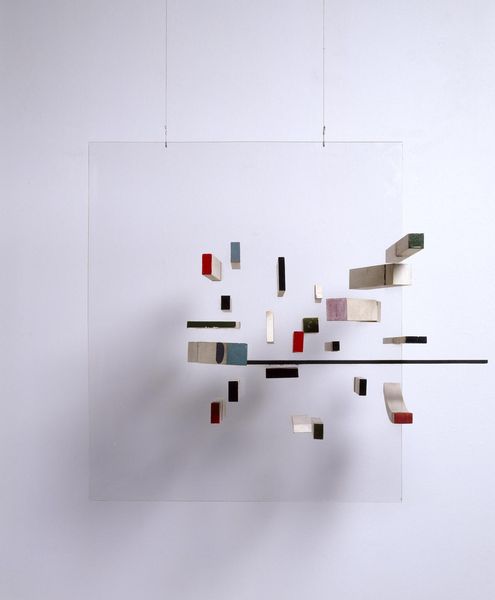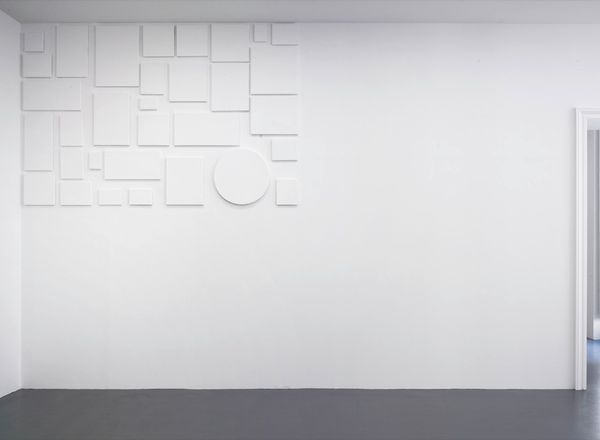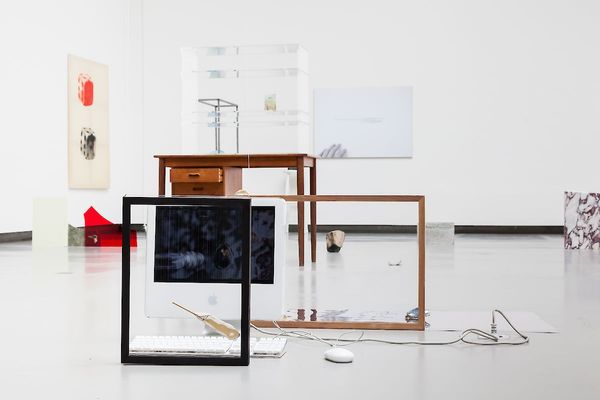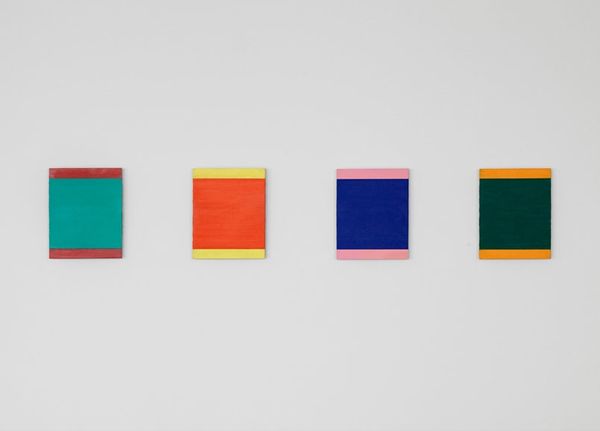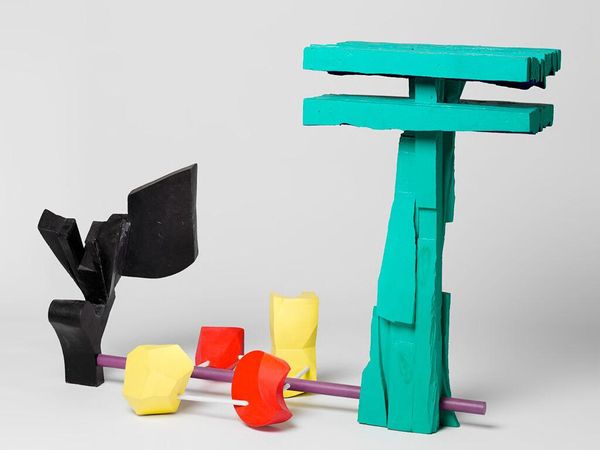
photography, installation-art
#
conceptual-art
#
postmodernism
#
photography
#
geometric
#
installation-art
#
modernism
Dimensions: image: 44.13 × 57.15 cm (17 3/8 × 22 1/2 in.) sheet: 50.8 × 60.96 cm (20 × 24 in.)
Copyright: National Gallery of Art: CC0 1.0
Curator: Looking at Leland Rice's photograph of Guy de Cointet’s "Tell Me" from 1979, what strikes you first? Editor: It's fascinating. It’s a photograph, but it documents an installation. There’s this arrangement of geometric shapes, tables, chairs...It’s very still, almost sterile in its composition, with all the focus being on the placement of the materials and objects within this domestic-esque setting. What would you say is particularly relevant about its materiality here? Curator: Rice’s photographic rendering seems to purposefully flatten the labor embedded in de Cointet’s original sculptural and performance-based work. It distances the viewer from any direct sensory experience, as opposed to being immersed in the actual space filled with crafted props and objects. It even references some symbols arranged on the walls. Think of what the artist had to produce in order to stage such a seemingly sparse setup, or even of the setup being created to be a background for performances. Editor: That makes me consider the tables and chairs differently. The title “Tell Me” also leads me to think of it as a kind of a stage. I am trying to think how performance and staging plays in all of this, from production to meaning making. Curator: Consider also how Rice is framing a space where both work and a strange theatrical experience coexist. The objects almost appear like factory made, hinting a production aspect to be taken into account. What purpose does the photographic image ultimately serve in either elevating or deconstructing Cointet’s intended creative intent? Editor: That’s a great point. I hadn’t thought about the artist as a sort of manufacturer. It also really challenges our traditional understanding of the artist as one who primarily does manual work. Now it is more about planning or engineering something. It provides an interesting perspective on contemporary art. Curator: Exactly. Thinking about this work through its materials and modes of production definitely adds another layer of complexity. What’s important, as well, is seeing photography's own mode of making. Editor: Absolutely. Thanks for that different perspective. It makes me see how artists work. It's more than just individual expression, it's an interplay between different processes and ideas!
Comments
No comments
Be the first to comment and join the conversation on the ultimate creative platform.
